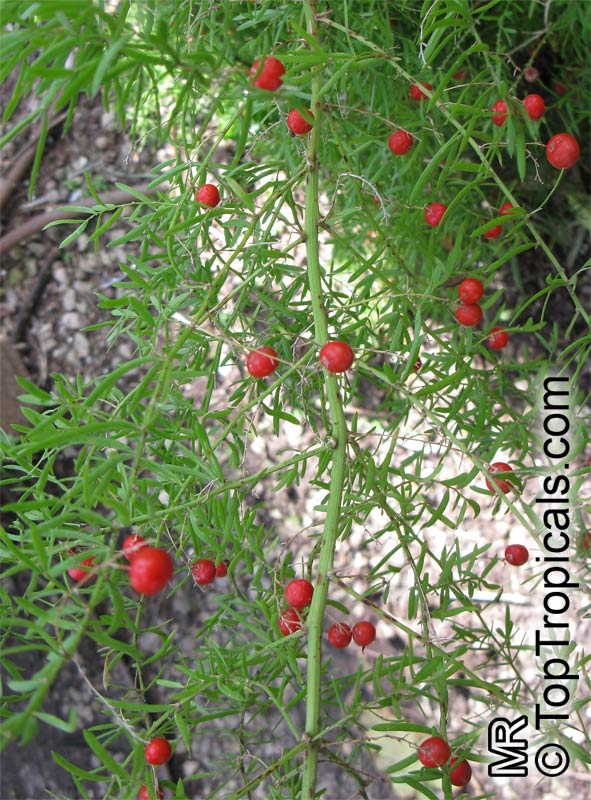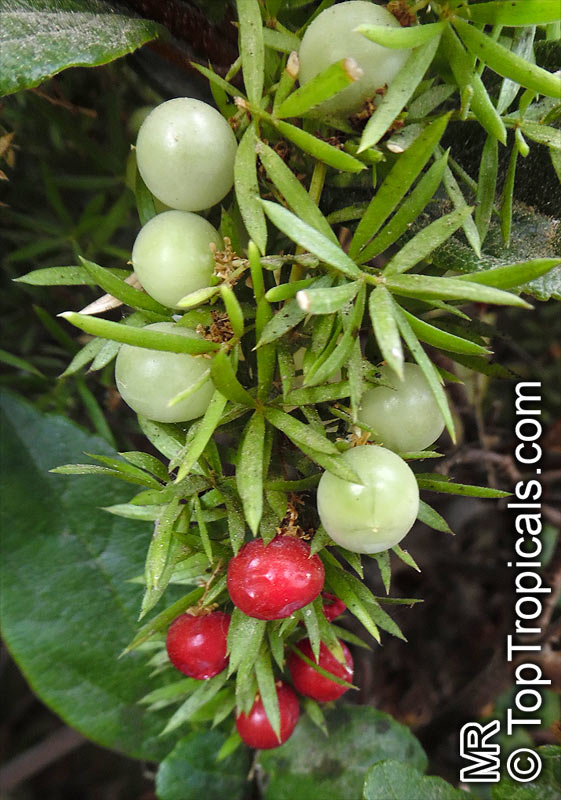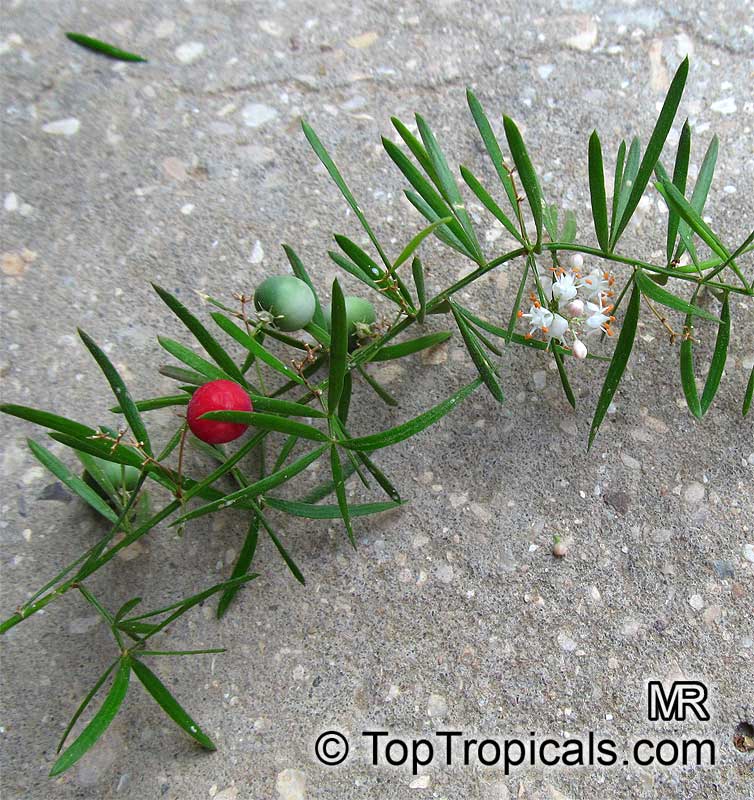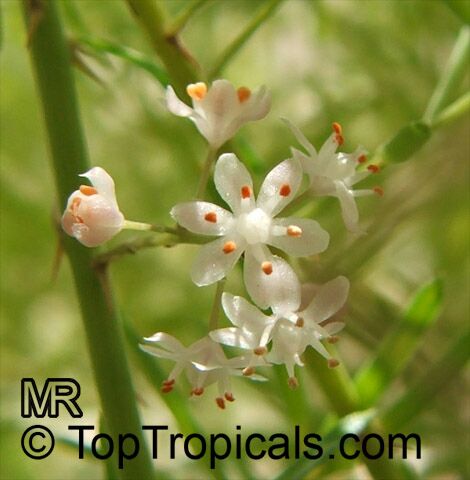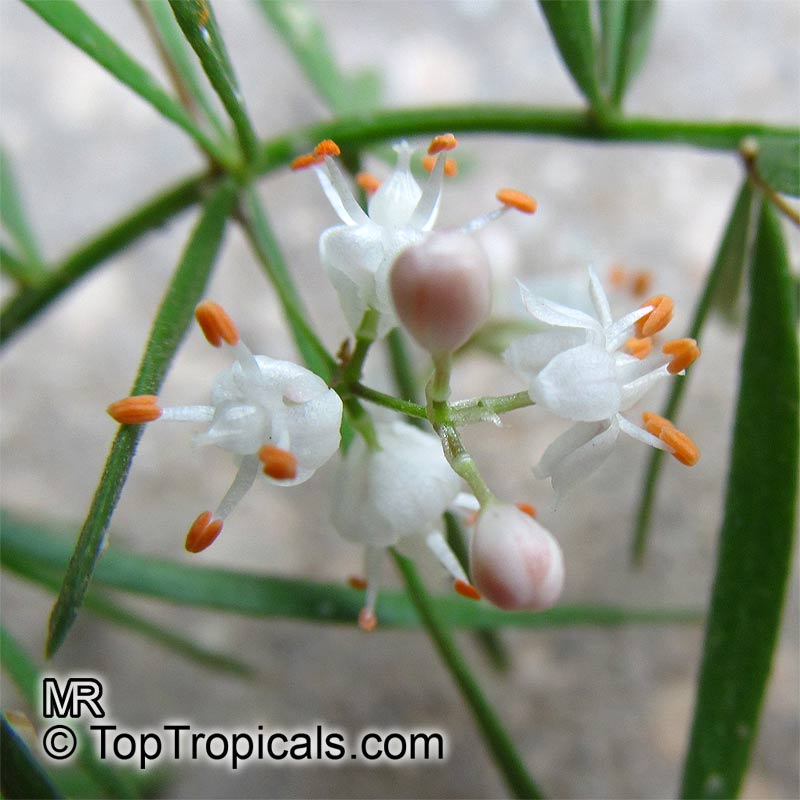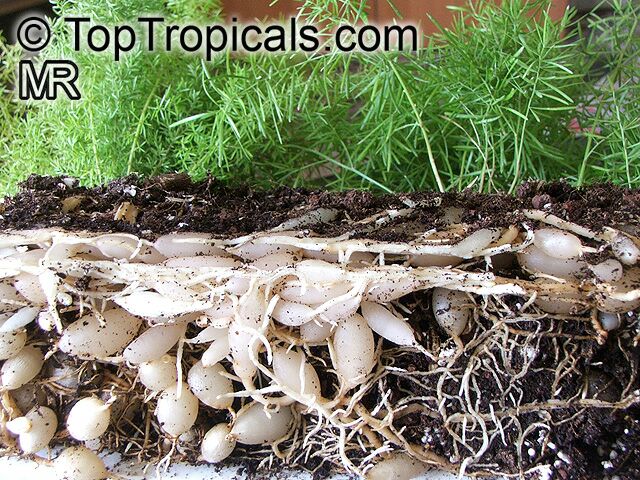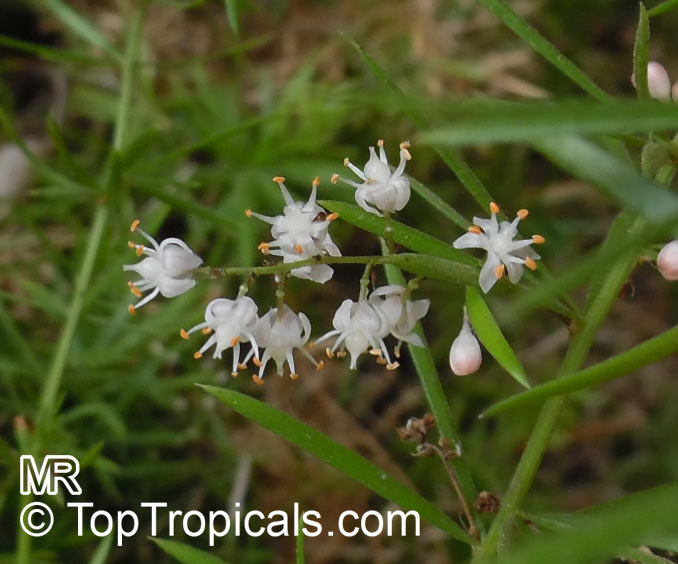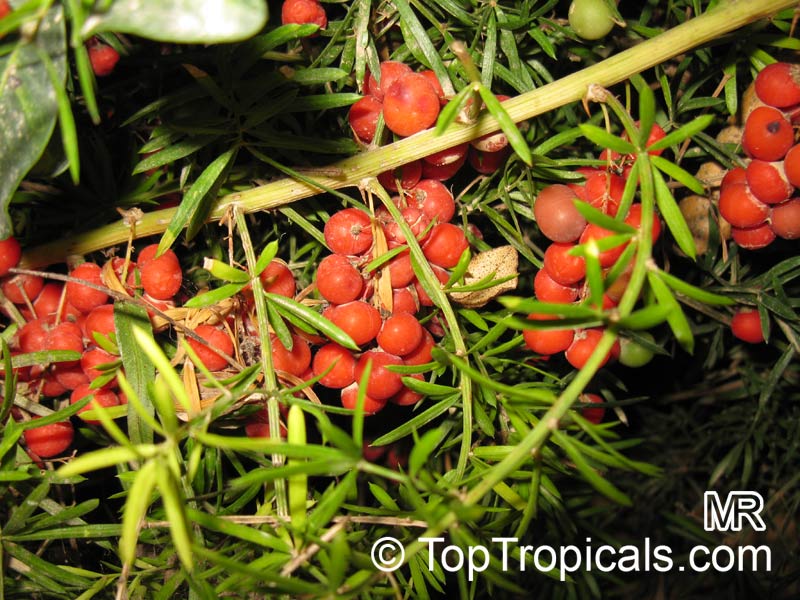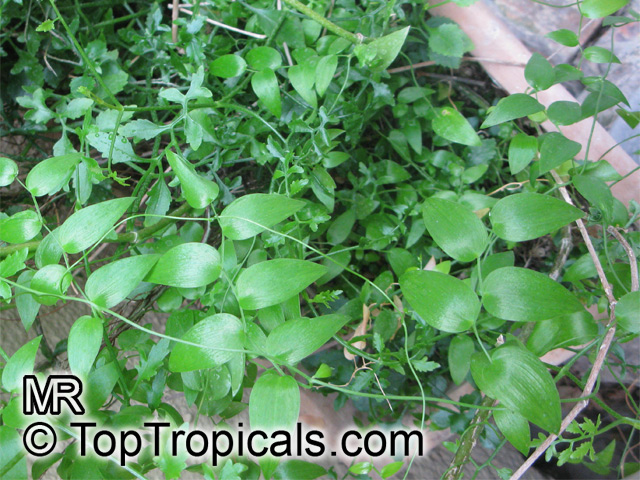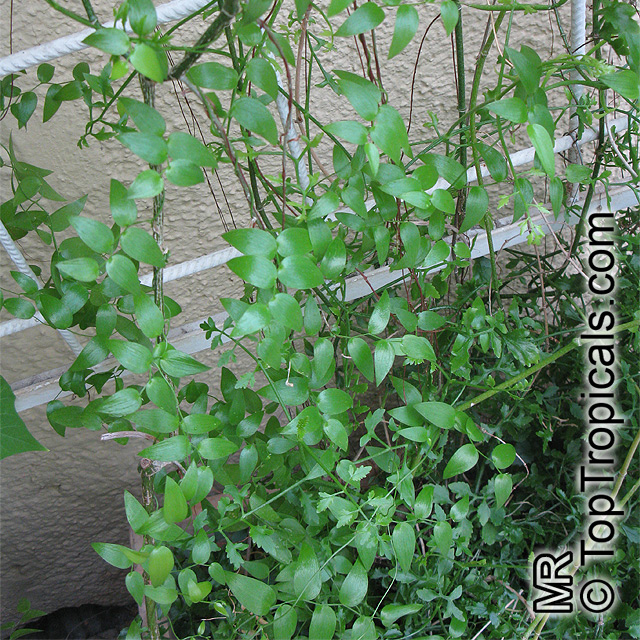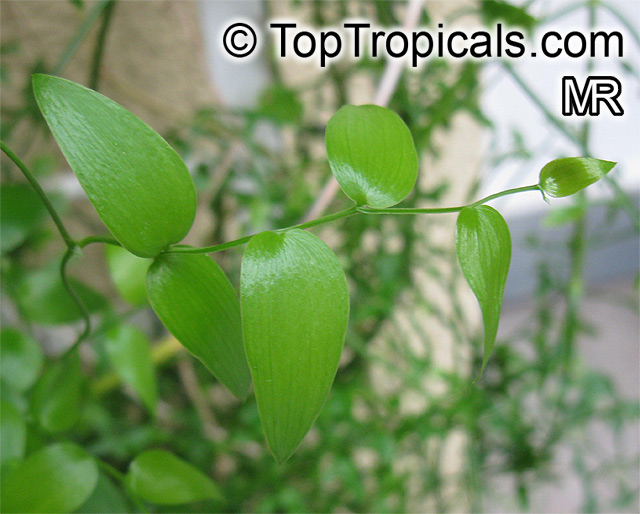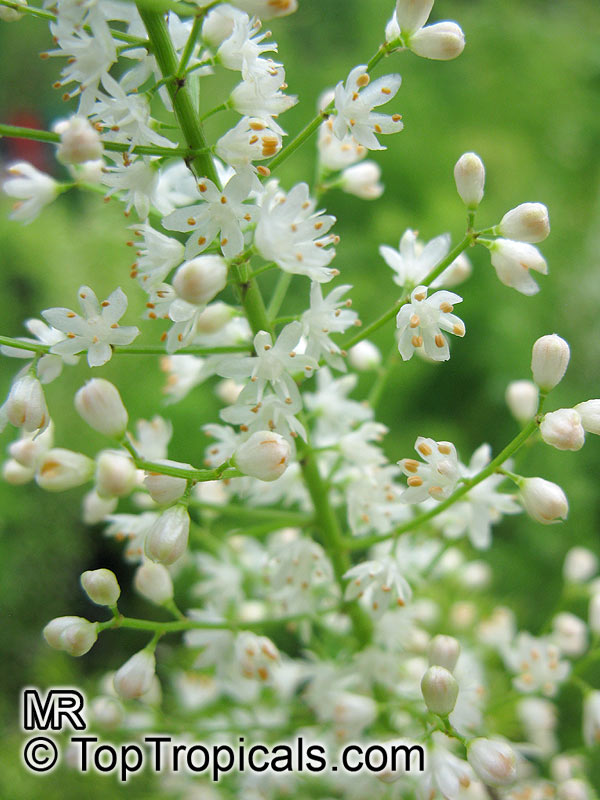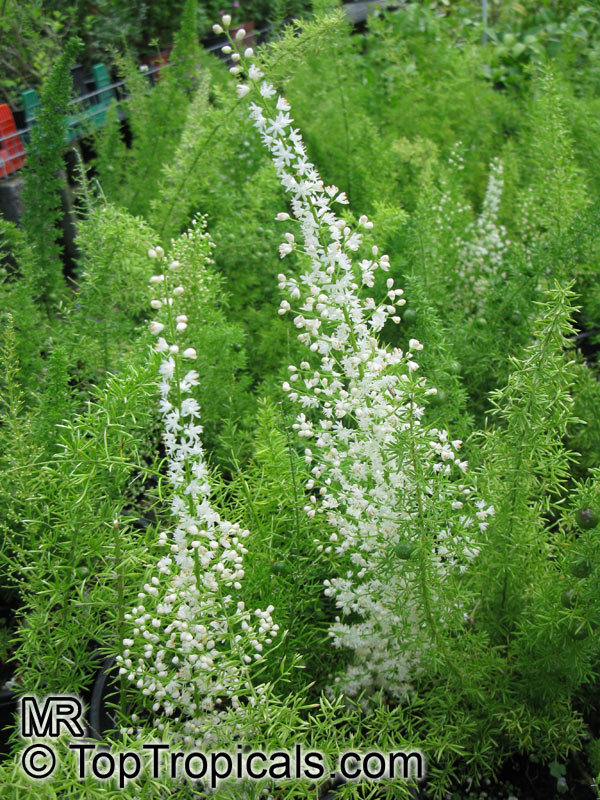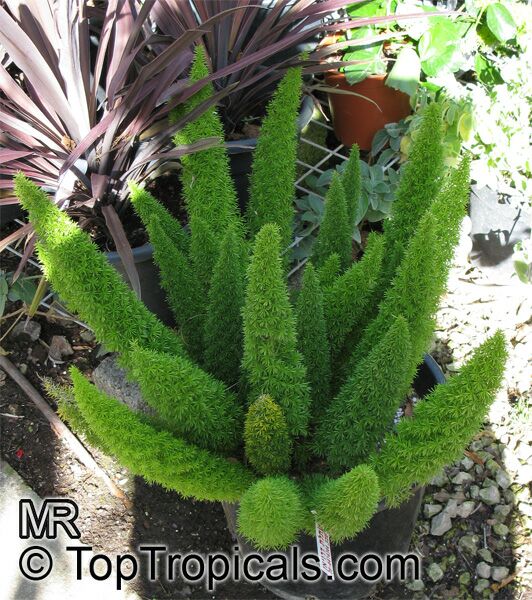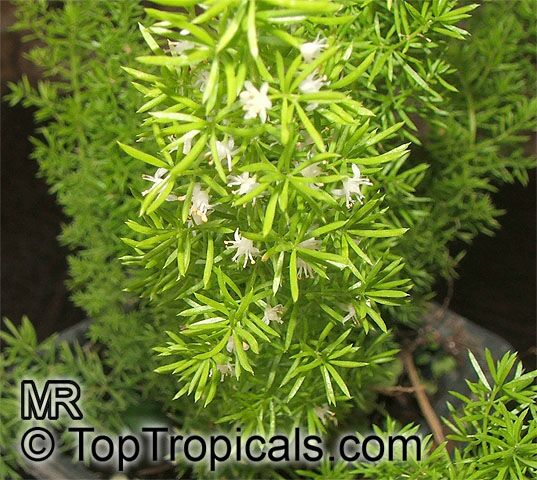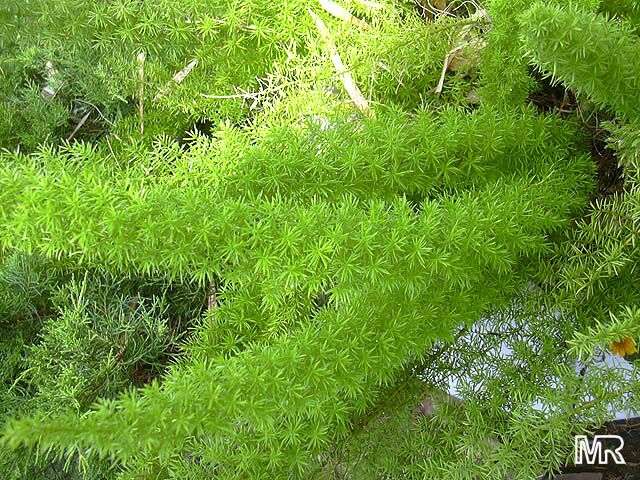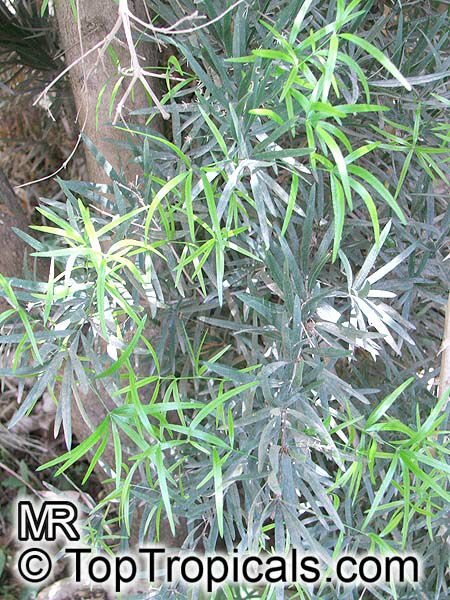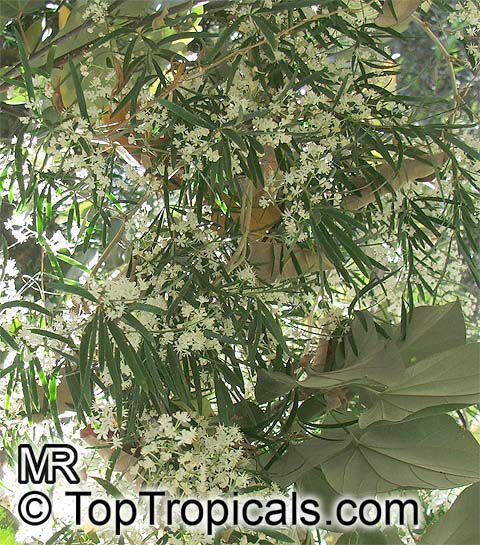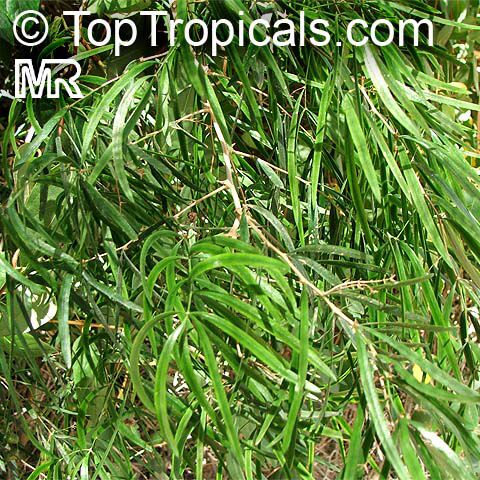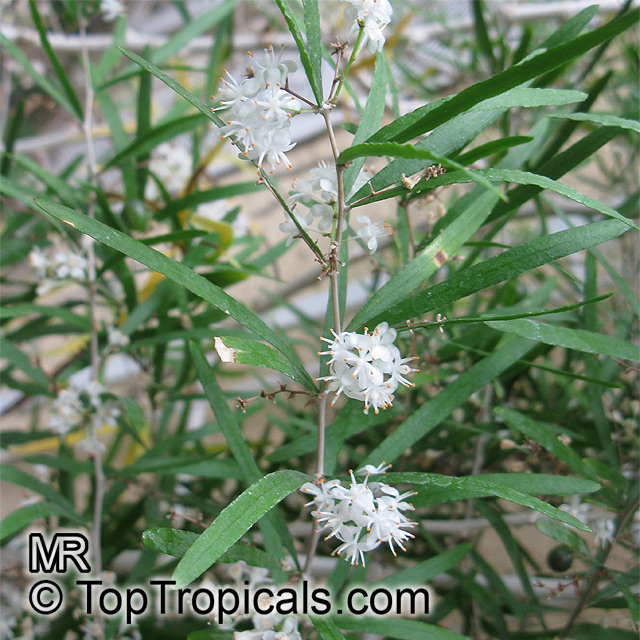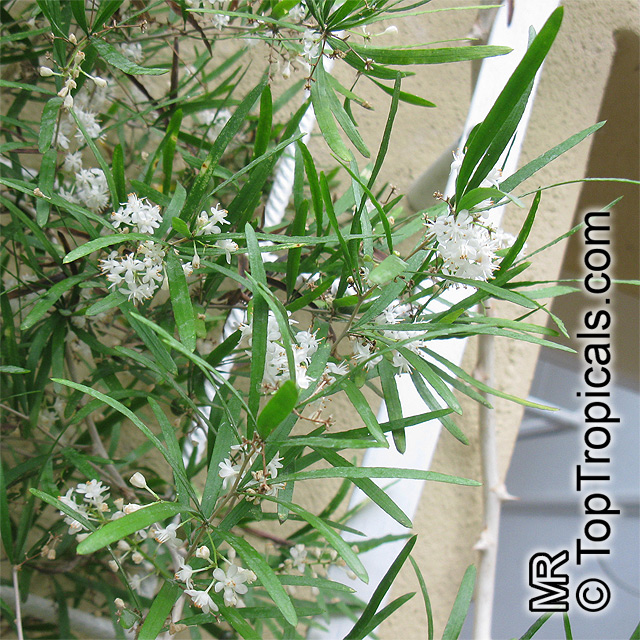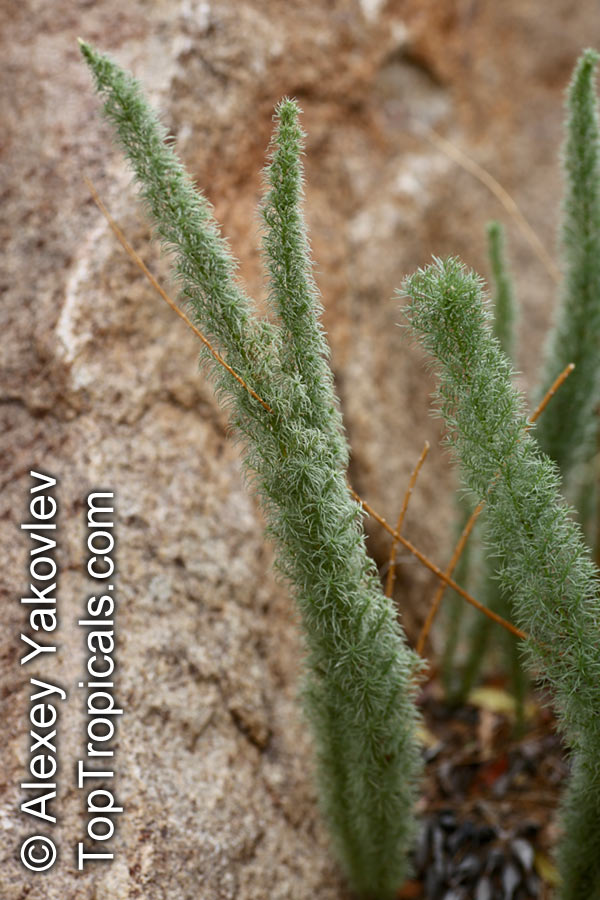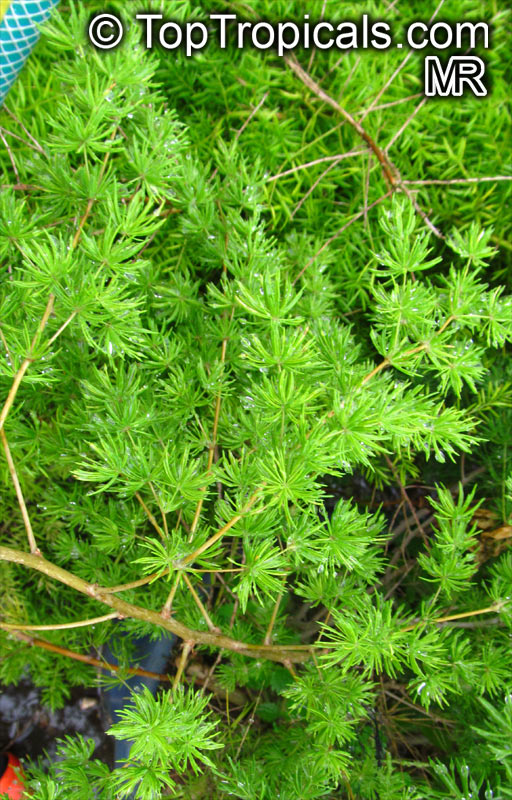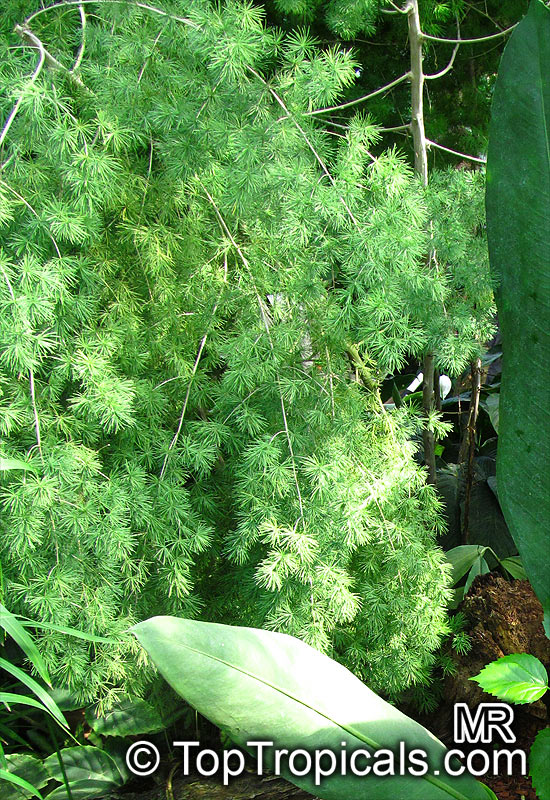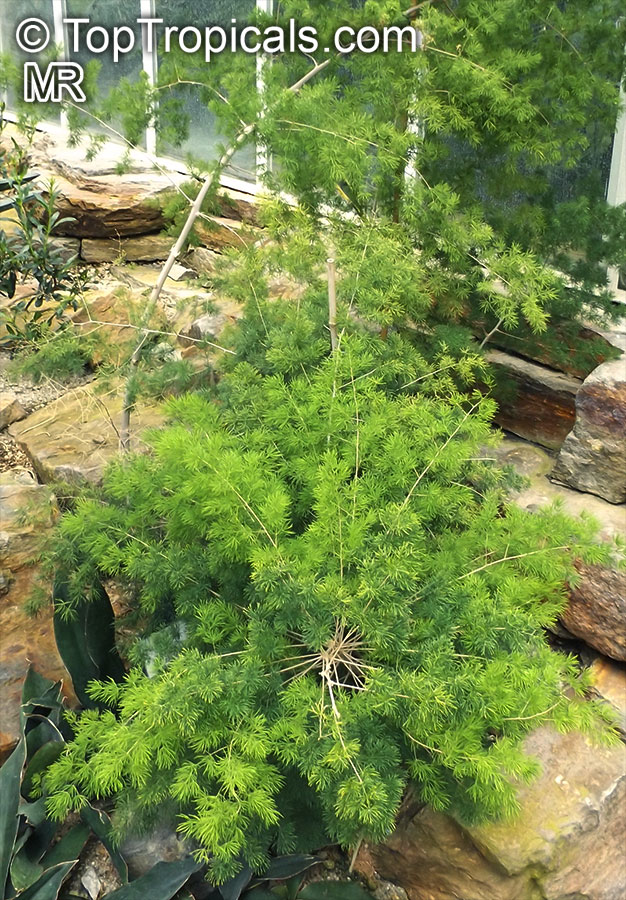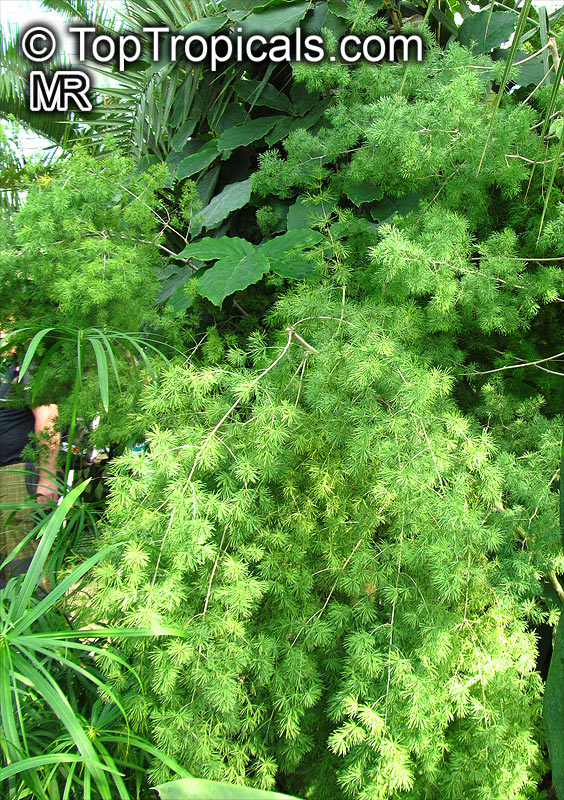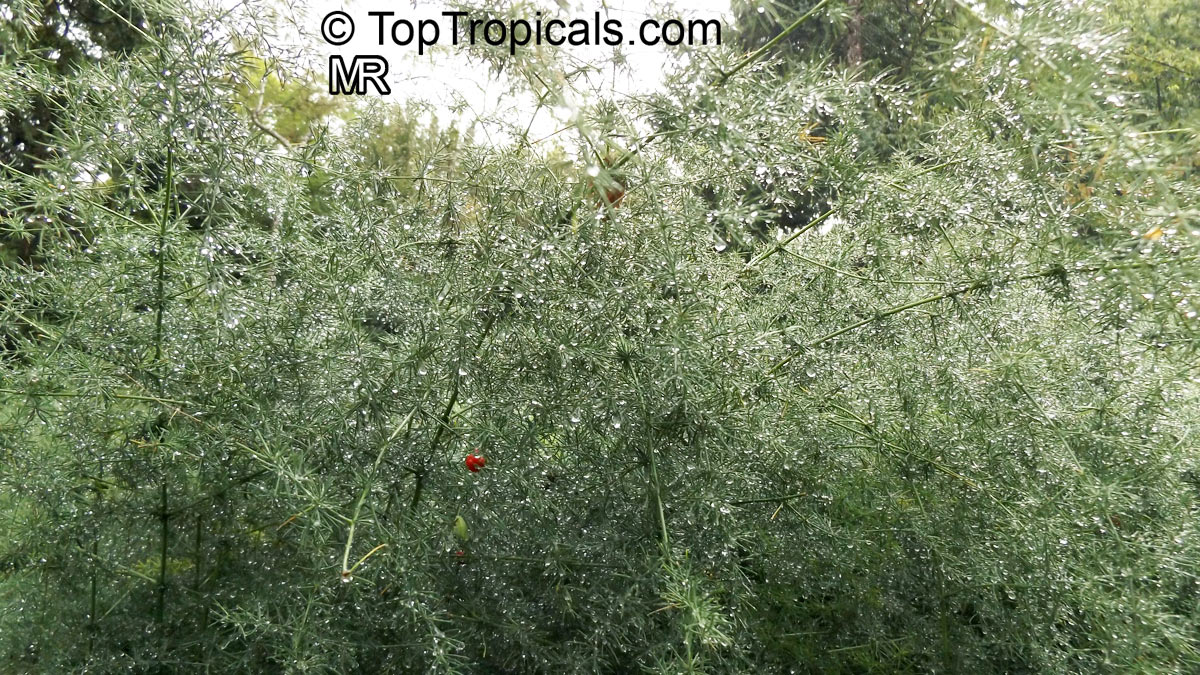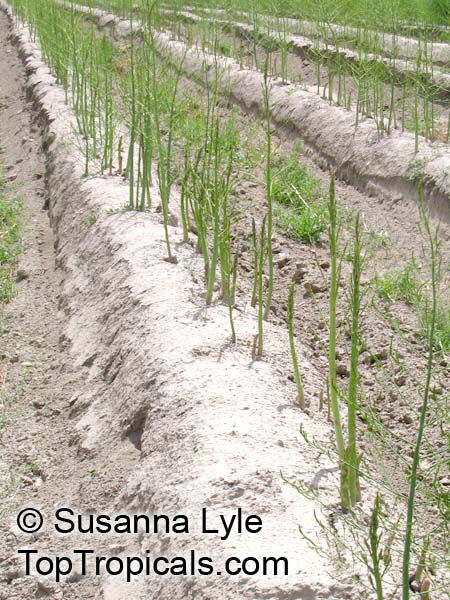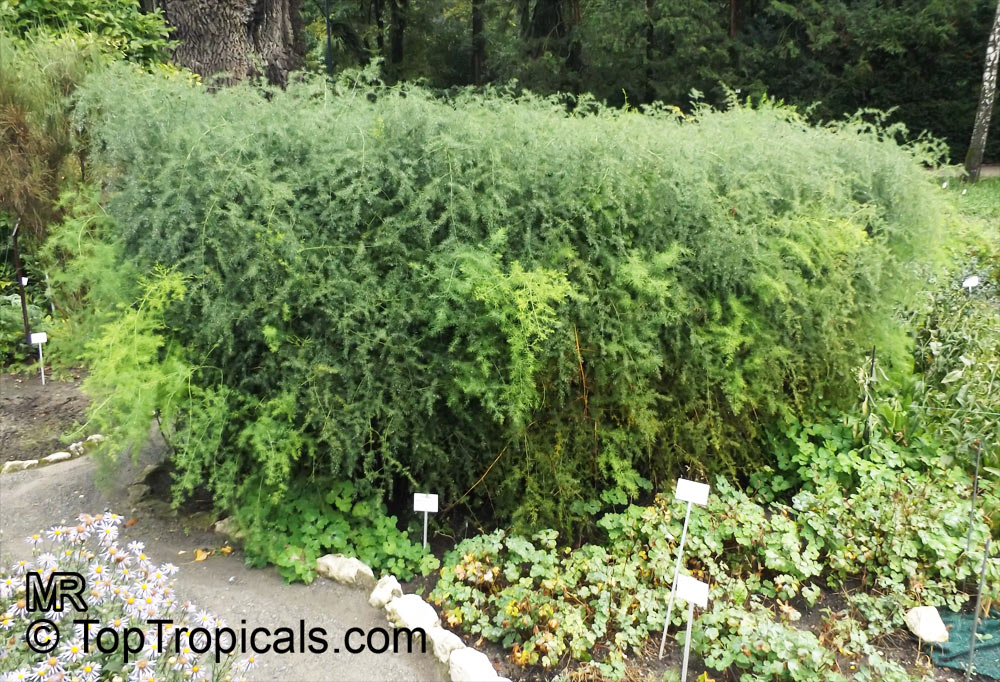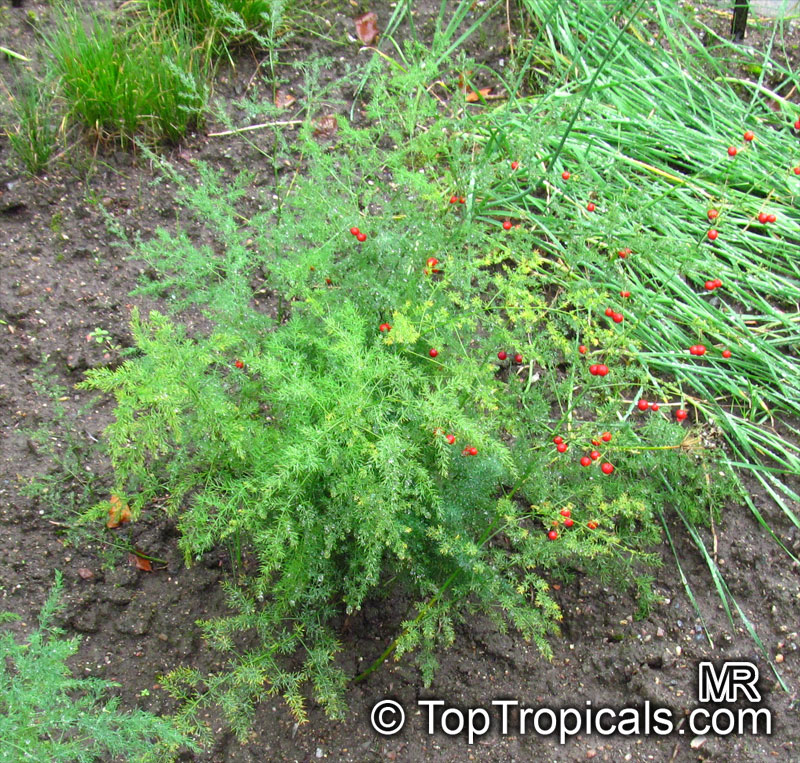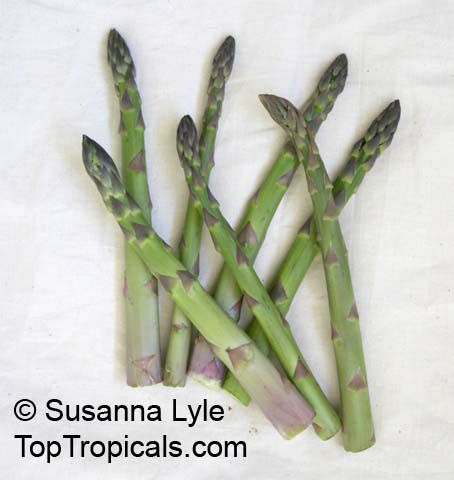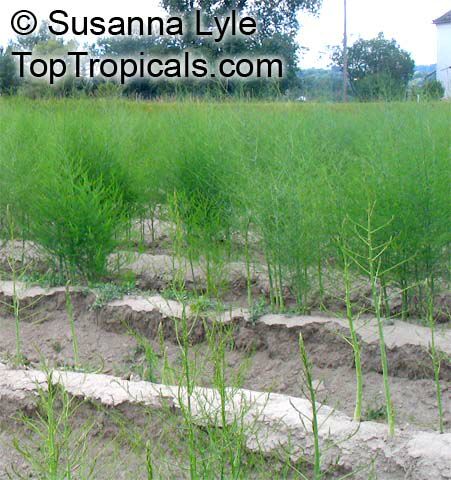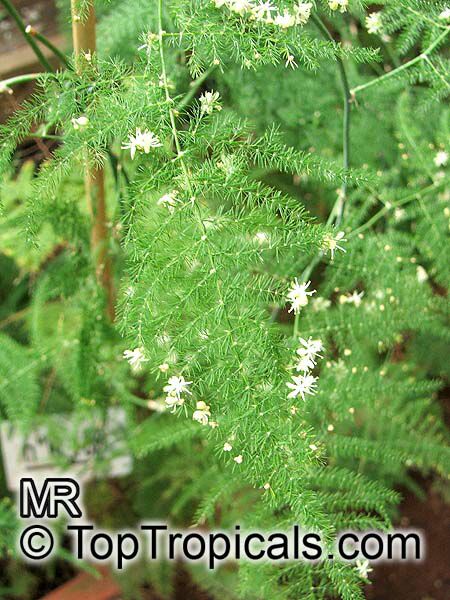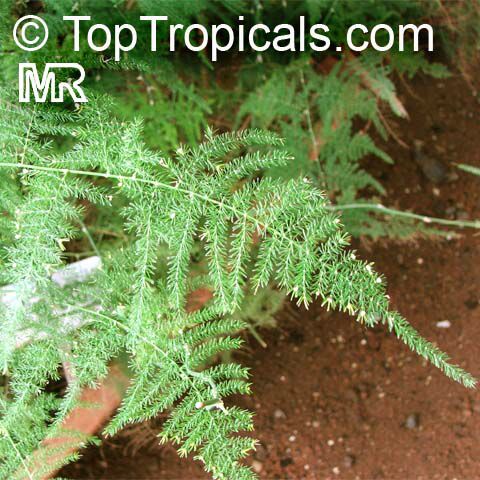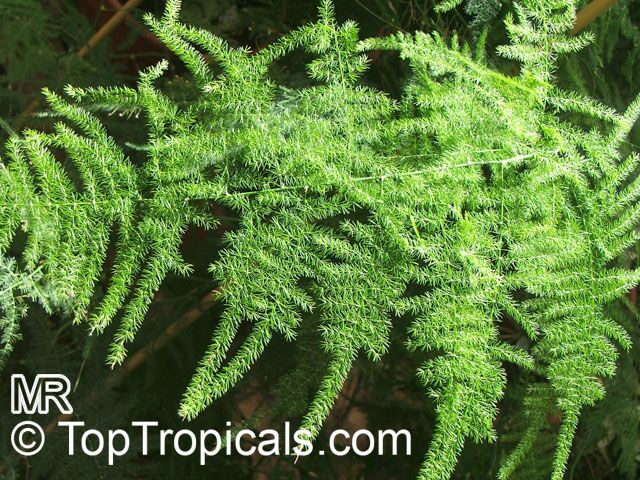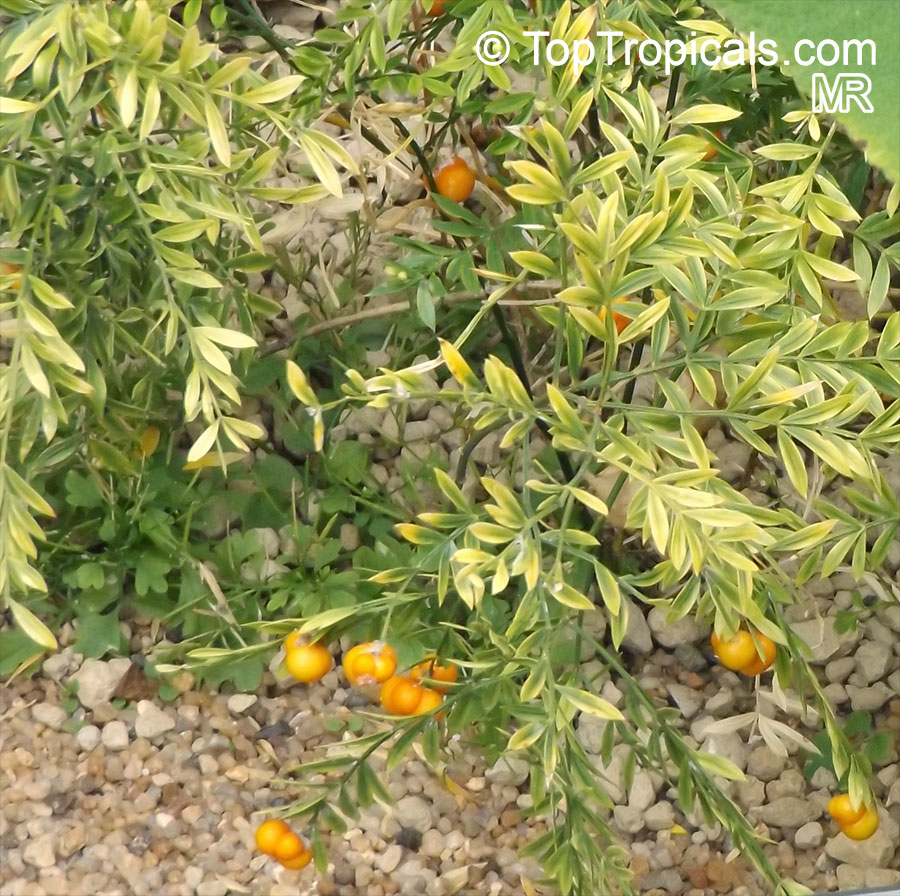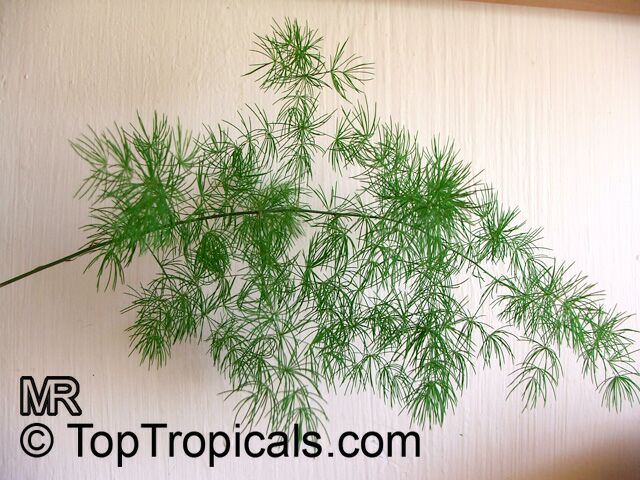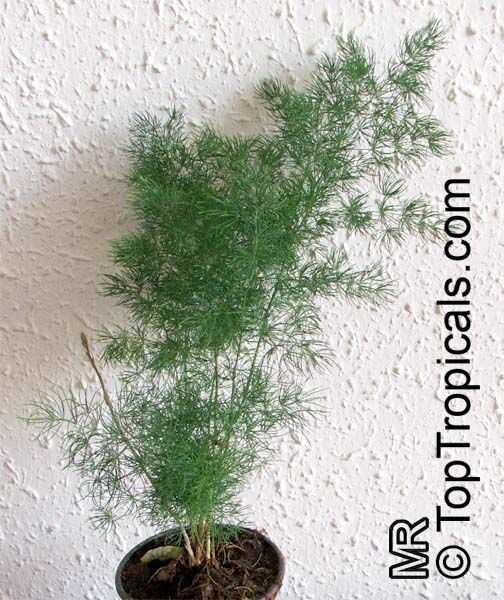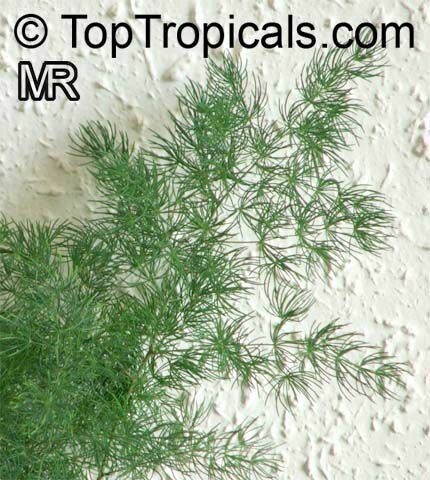Asparagus - Plant Encyclopedia Results
Top Tropicals Plant Encyclopedia
| Number of plants found: 14 | Next | 
|
Go to page: | 1 | 2 |
Botanical name: Asparagus aethiopicus
Common names: Asparagus Fern, Foxtail Fern, Sprenger's Asparagus
Family: Asparagaceae (Formerly:Asparagaceae / Hyacinthaceae / Liliaceae)
Subfamily: Asparagoideae
Origin: South Africa







Asparagus aethiopicus has been confused with Asparagus densiflorus, now regarded as a separate species, so that information about A. aethiopicus will often be found under the name A. densiflorus.
Botanical name: Asparagus asparagoides
Common names: Bridal Creeper, African Asparagus Fern
Family: Asparagaceae (Formerly:Asparagaceae / Hyacinthaceae / Liliaceae)
Subfamily: Asparagoideae
Origin: South Africa







Asparagus asparagoides has shiny green leaf-like structures (phylloclades) which are flattened stems rather than true leaves.
Botanical names: Asparagus densiflorus, Protasparagus densiflorus
Common names: Fox Tail, Emerald Asparagus Fern
Family: Asparagaceae (Formerly:Asparagaceae / Hyacinthaceae / Liliaceae)
Subfamily: Asparagoideae
Origin: South Africa










Asparagus densiflorus, also known as the Fox Tail, is a scrambling plant that can grow up to 3 ft long. Its upright or trailing branches are slightly woody and are best known for the 'Sprengeri' cultivar, which forms large cushions with long, arching stems covered in dark green, needle-like leaves. These plants can be used as groundcovers in shade or full sun, or in large containers or hanging baskets. The cultivars 'Cwebe' and 'Myersii' form more upright plants, with the latter having a compact cat's tail-like frond appearance. Cultivar 'Myersii' looks best when grown in shade or semi-shade.
The small, sweetly scented flowers of Asparagus densiflorus are usually white or pale pink, but their flowering can be erratic, with a good flowering year on average only once every three years. The small flowers are followed by showy bright red berries, which are attractive to birds and may be spread by them.
The plant can grow in most soils and is drought tolerant, but it does better in soil that is rich in organic matter and is watered regularly. To rejuvenate the plants, they can be cut back after flowering.
This plant is suitable for growing in USDA Zones 9-11 and can do well as a pot plant in cold regions. The soil should be nutrient-rich, well-drained and moist, and the soil should be kept moist but not wet. Plants should be placed in an area with full sun to partial shade, depending on the variety. Asparagus densiflorus should be watered regularly, with more frequent watering during hot and dry periods. To ensure healthy foliage and growth, fertilize the plant two to three times a year with a balanced fertilizer. Pruning is usually unnecessary, but if, over time, the plants become too large, they can be cut back in late fall or early winter.
Botanical name: Asparagus falcatus
Common name: Sicklethorn
Family: Asparagaceae (Formerly:Asparagaceae / Hyacinthaceae / Liliaceae)
Subfamily: Asparagoideae
Origin: South Africa








Asparagus falcatus is an evergreen climbing shrub, up to 7 m high. The roots of this plant form swollen tubers that resemble sweet potatoes.
Botanical name: Asparagus juniperoides
Common name: Asparagus
Family: Asparagaceae (Formerly:Asparagaceae / Hyacinthaceae / Liliaceae)
Subfamily: Asparagoideae
Origin: South Africa




Botanical names: Asparagus laricinus, Protasparagus laricinus, Asparagus angolensis
Common names: Cluster-leaf Asparagus, Bergkatbos
Family: Asparagaceae (Formerly:Asparagaceae / Hyacinthaceae / Liliaceae)
Subfamily: Asparagoideae
Origin: South Africa






Botanical name: Asparagus officinalis
Common name: Garden Asparagus
Family: Asparagaceae (Formerly:Asparagaceae / Hyacinthaceae / Liliaceae)
Subfamily: Asparagoideae










Asparagus officinalis has been used from very early times as a vegetable and medicine, owing to its delicate flavor and diuretic properties.
Botanical names: Asparagus plumosus, Protasparagus plumosus
Common name: Asparagus Fern
Family: Asparagaceae (Formerly:Asparagaceae / Hyacinthaceae / Liliaceae)
Subfamily: Asparagoideae
Origin: South Africa





Asparagus plumosus, also known as Asparagus Fern, is a small shrub native to South Africa, typically growing between the heights of 2-5 feet tall. It's an attractive evergreen perennial usually grown as an ornamental plant, due to its beautiful foliage. It is best grown in USDA Zones 9-11 and requires moderate water in order to stay healthy and lush.
If you are looking to grow Asparagus plumosus as a houseplant, then it needs a bright spot with some shade. For warmer climates, regular watering is needed to keep the soil moist, but not wet. To keep the soil from drying out, you can use a plastic pot or pot your plant in a terracotta pot with a plastic liner. Since the shrub prefers a moist environment, adding some mulch on top can help retain moisture and reduce the need for frequent watering.
For colder regions, where the soil freezes during winter, it can be tricky to keep Asparagus plumosus going. To start with, you must grow it in a pot that is filled with good potting mix. This will help drain the soil quickly and ensure that water doesn't get frozen in the pot. It is also important that you use a protective covering, such as a plastic sheet, to protect the foliage from cold winds. Watering in winter should be kept to a minimum as too much water can damage the roots. Moreover, avoid fertilizing in winter and wait until the spring to feed your Asparagus Fern.
Botanical names: Asparagus simulans, Asparagus madagascariensis, Asparagus rusciformis
Family: Asparagaceae (Formerly:Asparagaceae / Hyacinthaceae / Liliaceae)
Origin: Madagascar






Botanical name: Asparagus umbellatus
Common name: Asparagus Fern
Family: Asparagaceae (Formerly:Asparagaceae / Hyacinthaceae / Liliaceae)
Subfamily: Asparagoideae
Origin: Macaronesian islands





| Next |  |
Use link to repeat this search:
https://toptropicals.com/cgi-bin/garden_catalog/cat.cgi?find=Asparagus&search_op=and&keyword_op=and&language=e&number=10
&no_change_lang=1&user=tt&sale=1&first=0
